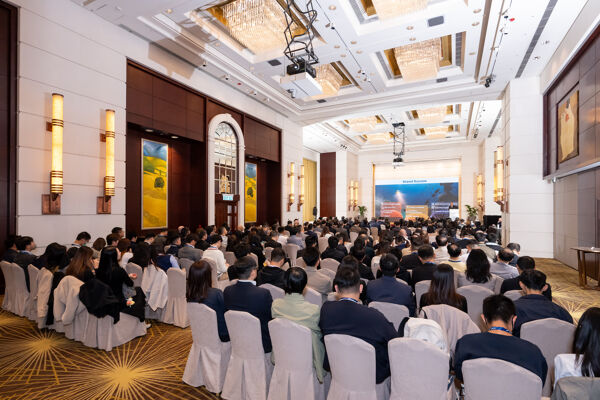
KEY POINTS
- The Building Safety Act 2022 (BSA) introduced a new building safety regime for higher-risk buildings in England.
- Implications for NEC users include the need for clients to appoint BSA ‘principal designer’ and ‘principal contractor’, the need to maintain a ‘golden thread’ digital record of design and construction, and extension of the legal defects claims period to 15 or 30 years
- NEC project teams will also need to engage with the HSE Building Safety Regulator to pass three ‘gateways’ before a higher-risk building can be occupied.
The Building Safety Act 2022 (BSA), the bulk of which came into force in England and Wales on the 28 April 2022 brought in several measures to make buildings safer for residents. It was introduced following the failures in building safety that led to the tragic Grenfell Tower Fire in London in 2017.
The BSA is primarily aimed at higher risk buildings, which it defines as a building in England that is at least 18 m in height or has at least seven storeys and, for the purpose of the part of the new regime that regulates occupied buildings, contains at least two residential units.
Regulation 2 of the Higher-Risk Buildings (Descriptions and Supplementary Provisions) Regulations 2023, which came into force on 6 April 2023, specifies that hospitals, care homes and buildings containing at least two residential units will also fall within the scope of the design and construction part of the new regime.
The Defective Premises Act 1972 (DPA) has been amended by the BSA to include refurbishment work and extend the time within which claims can be made, from 6 to 15 years for claims after 28 June 2022. In addition, the BSA extends the limitation periods to 30 years for claims under the DPA before 28 June 2022.
Implications for NEC users
Under the NEC4 Engineering and Construction Contract (ECC) the contractor is contractually liable to correct defects notified before the defects date stated in contract data part one. After the expiry of this period, the parties’ responsibilities in term of any latent defects discovered will be in accordance with the governing law of the contract and therefore in accordance with the extended periods in the DPA where this applies.
The BSA has introduced the roles of ‘Principal Designer’ and ‘Principal Contractor’ under the Building Regulations etc. (Amendment) (England) Regulations 2023. These are the same terms as used in the Construction (Design and Management) Regulations 2015 (CDM Regulations). Though labelled the same, they are distinct roles under each piece of legislation.
An NEC client will need to ensure that parties are appointed to undertake these roles and will, in the case of higher risk buildings, need to keep a record of the steps they took to satisfy the competency of those appointed. It should be made clear in the scope of the applicable contract which party is to be appointed to which role.
There is no requirement to include, via secondary option Z, an additional condition of contract to require a party to comply with the requirements of the BSA, or any subordinate or other legislation such as the CDM Regulations, as it applies to them. All parties have to comply with the appliable law: this is not a contractual requirement but a legal requirement.
The BSA introduced the concept of a ‘golden thread’ which requires a digital record of information about a building to be created and updated throughout its design and construction. Requirements in respect of information that is needed to maintain this golden thread, including its form as it must be stored digitally, can be included in the scope as part of any NEC contract used in the development and construction of a higher risk building. The duty to ensure the golden thread of information is in place and updated during the design and construction process will rest with the client or someone they engage to manage it on their behalf.
Occupation gateways
The BSA has created three ‘gateways’ that higher risk buildings will need to pass through before they can be occupied. The gateways are operated by the Building Safety Regulator (BSR) part of the Health and Safety Executive.
- Gateway 1 – land-use planning matters related to fire safety
- Gateway 2 – building control approval for higher-risk buildings
- Gateway 3 – completion certificate
At each gateway the NEC client will need to determine whether they or a member of their supply chain will engage with the BSR.
Gateways 2 and 3 act as hold points ensuring that safety is considered at each stage of the building control process. Gateway 2 has to be passed before construction work can commence. The client or its consultants will normally take responsibility for passing this gateway, or responsibility could be passed to the contractor as part of the construction contract. This is more likely to occur when the contractor is engaged on a design-and-build basis.
Gateway 3 requires the application for and issue of a completion certificate. The client or its consultants may take responsibility for passing this gateway or responsibility could be passed to a contractor as part of a construction contract. If the latter, the issue of the completion certificate should be included in the NEC scope as part of the description of what the contractor is required to do for completion to be achieved. If the client or its consultants take responsibility for passing gateway 3, completion under the construction contract may occur before gateway 3 has been passed, though this will depend on how completion has been defined in the scope.
The allocation of responsibility for passing gateway 2 and 3 will be allocated via the scope, with the default position being that it will reside with the client unless stated otherwise.
The BSR will be an ‘Other’ under an NEC contract and dealt with as any other third party that needs to be engaged as part of the relevant works or services. The dates when the BSR is expected to approve the gateways 2 and 3 application will be shown on the accepted programme. If others do not work within the time shown on the accepted programme, this will likely be a compensation event under clause 60.1(5).
Maintaining the golden thread
Once a building has passed gateway 3 and is occupied, the appointed ‘Accountable Person’ becomes responsible for coordinating the golden thread, keeping it updated and ensuring it is accurate and accessible.
NEC clients engaging contractors or service providers to provide facilities management services will need to consider who will maintain and update the golden thread if there are any changes to the structure or fabric of the building. Once again, the default will be the client unless the scope transfers this responsibility to the contractor or service provider.




